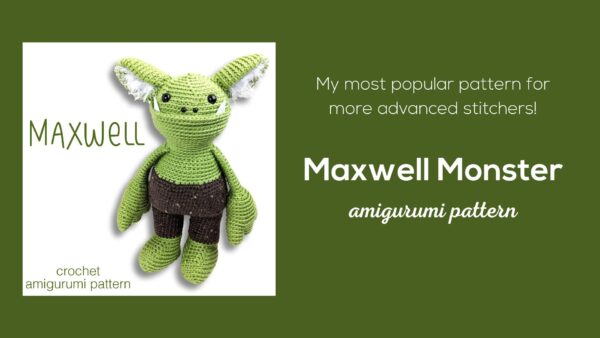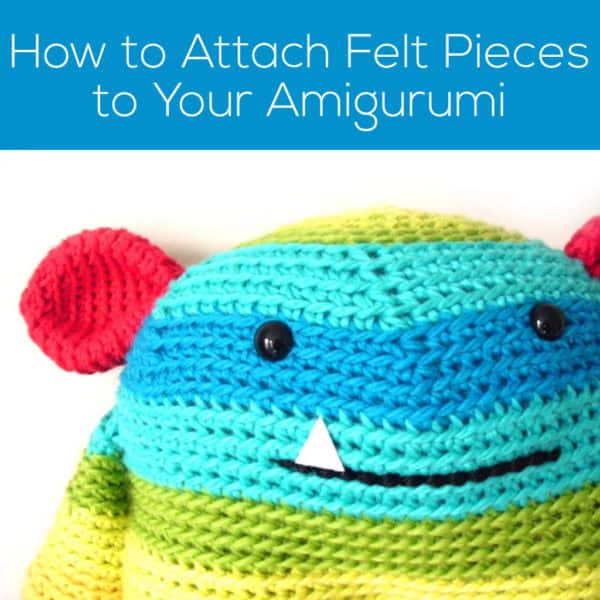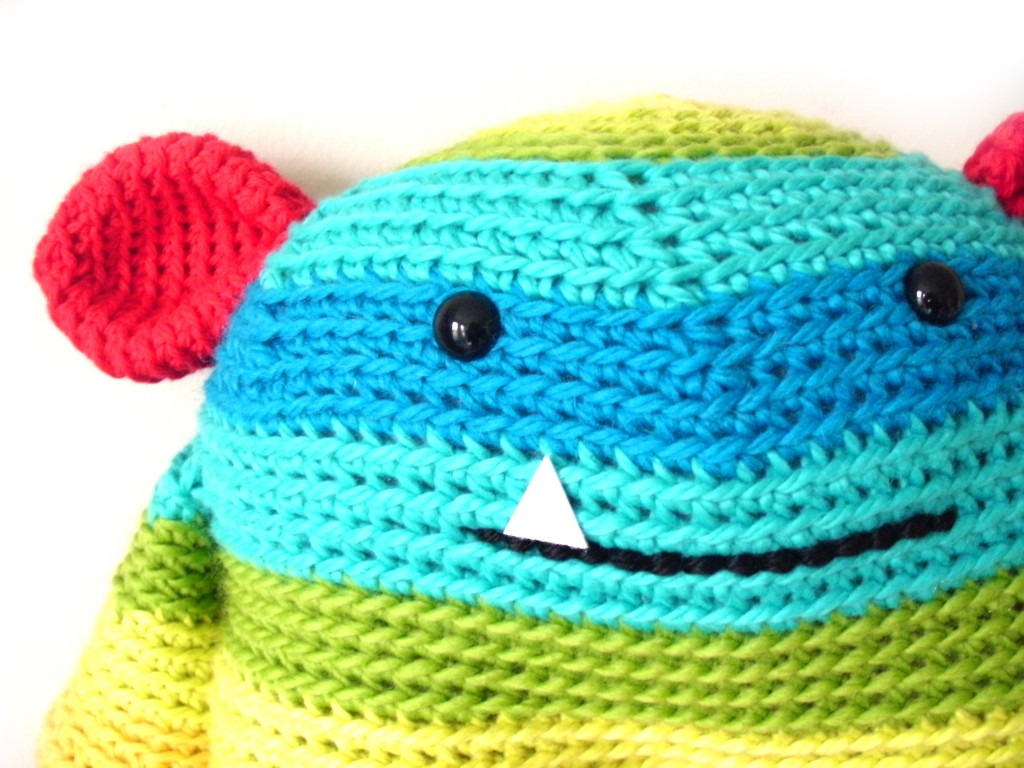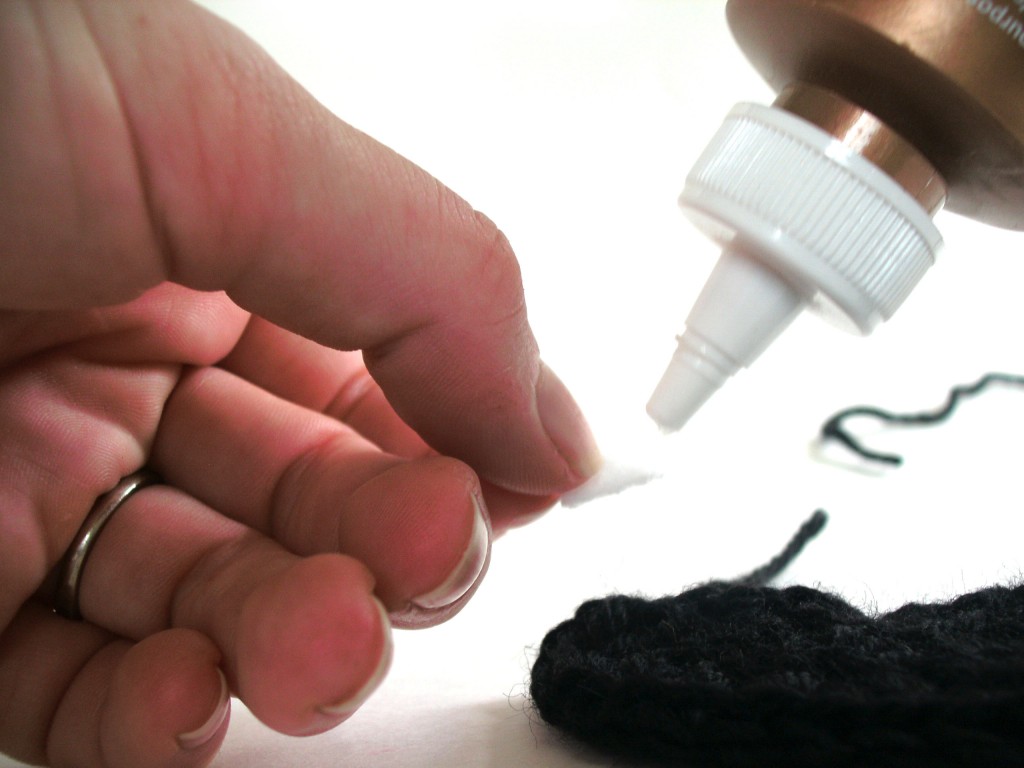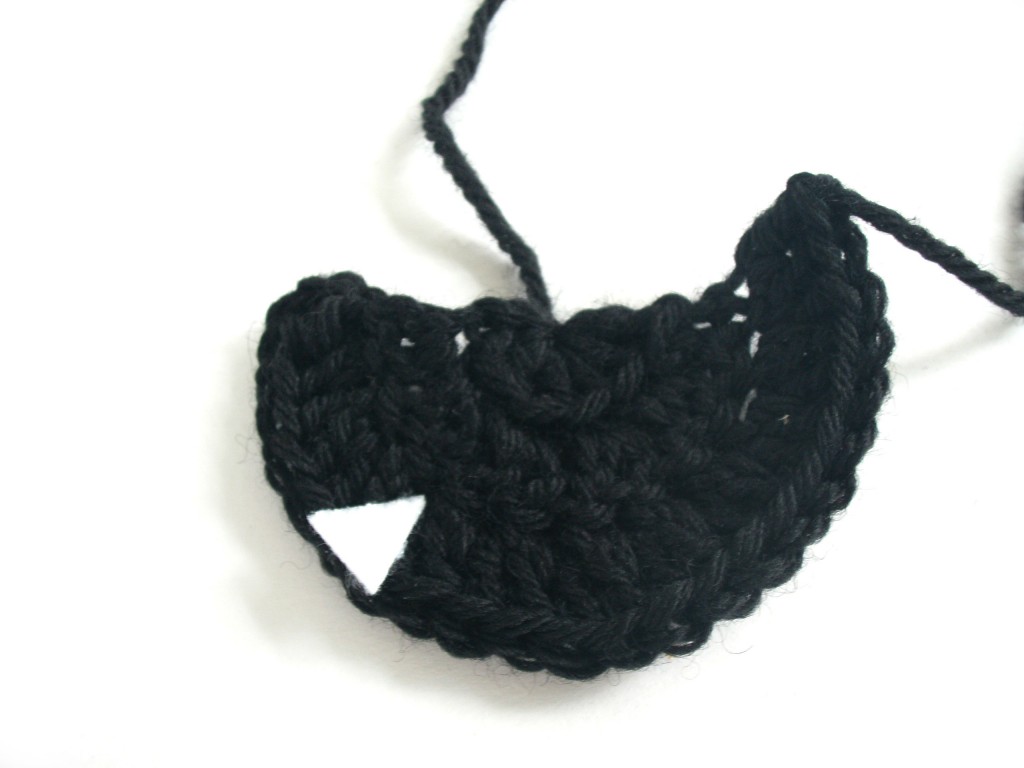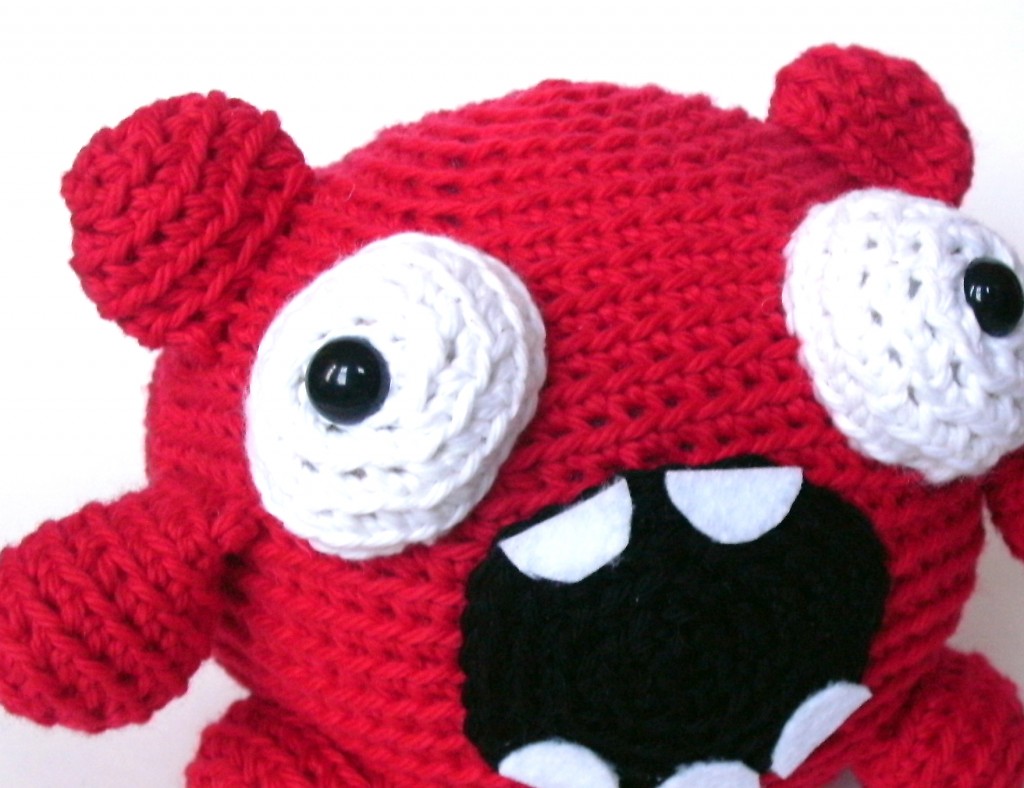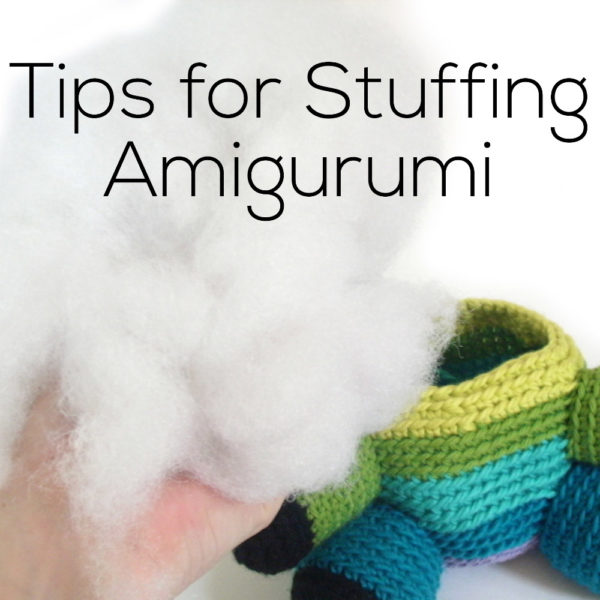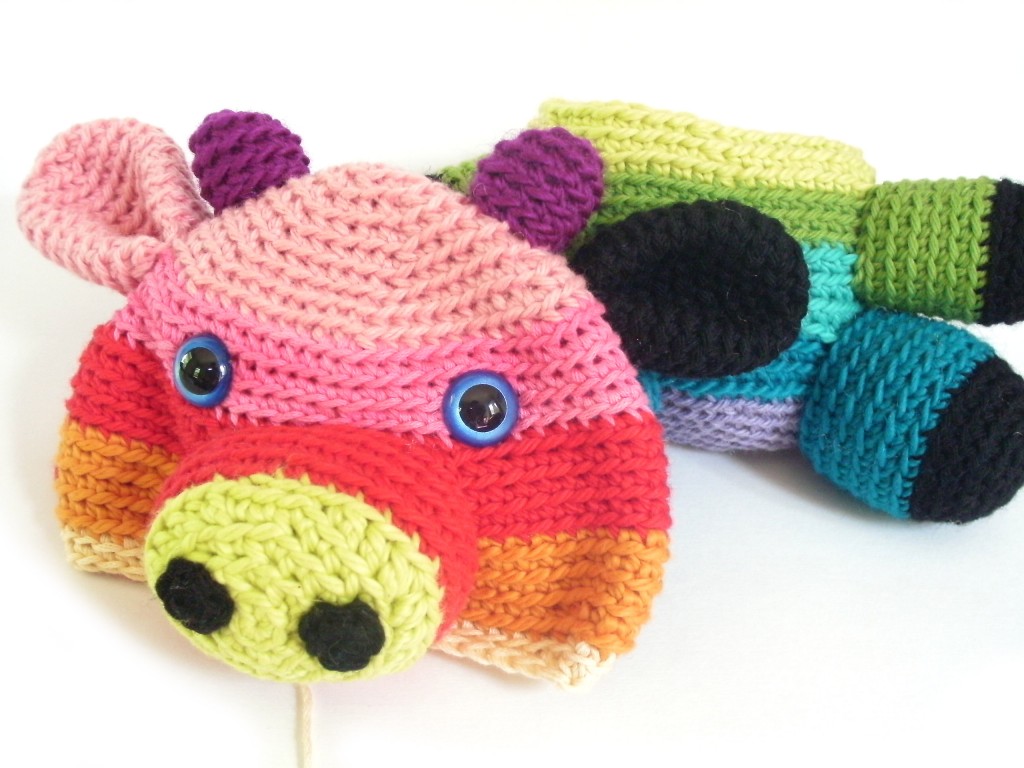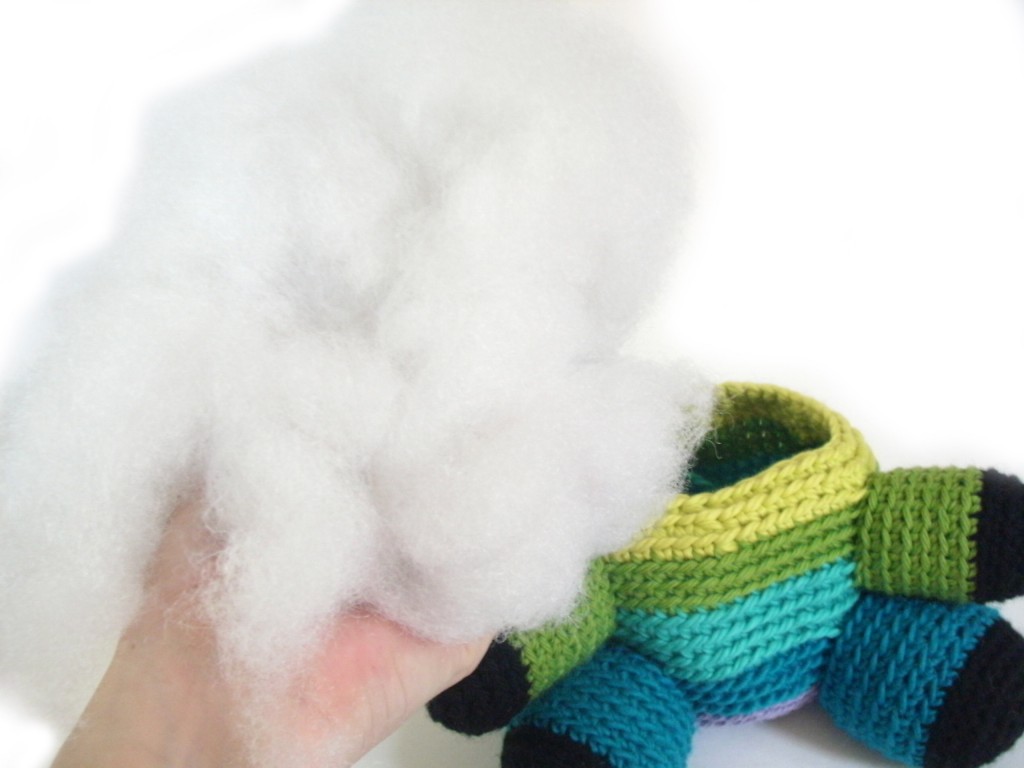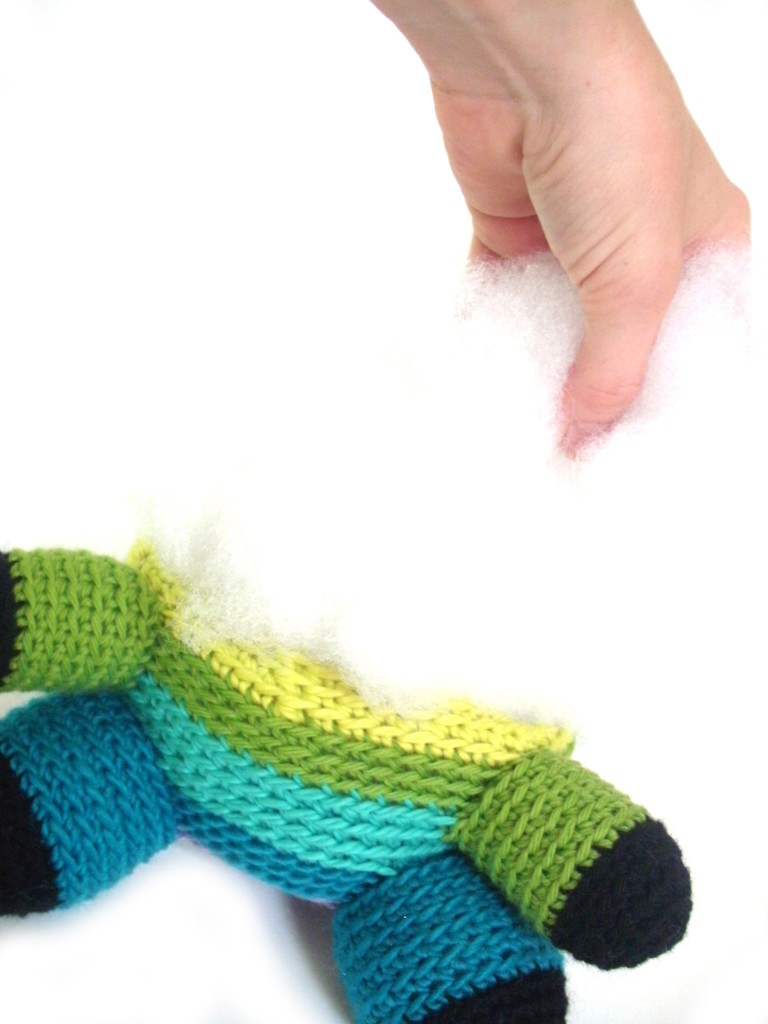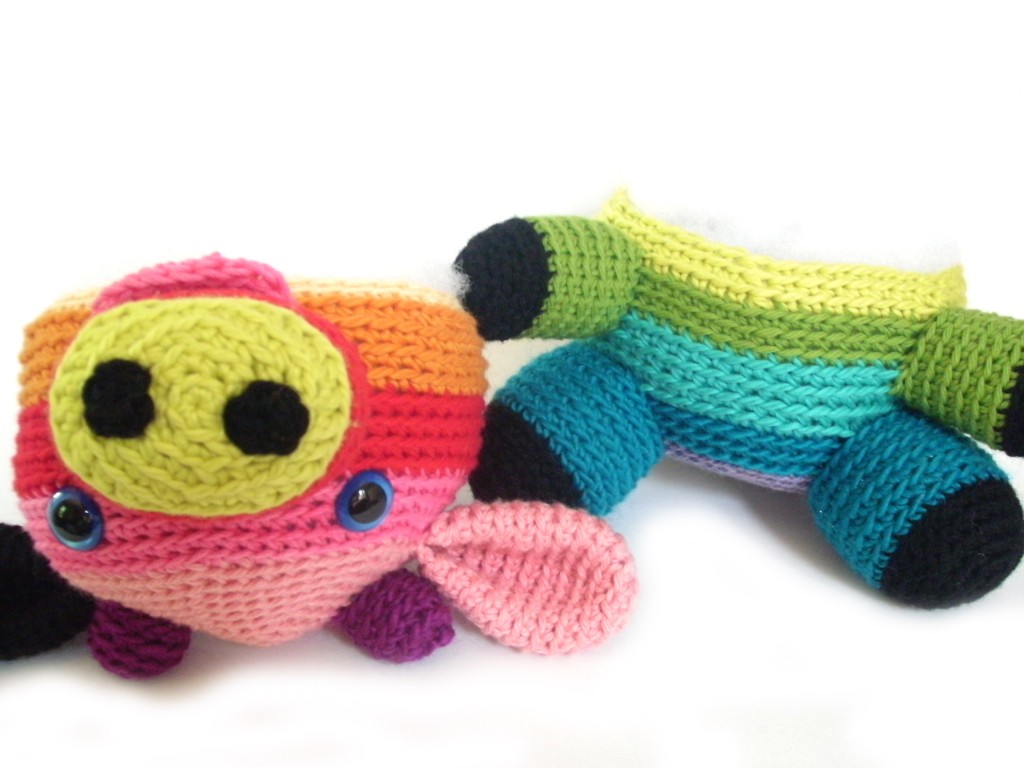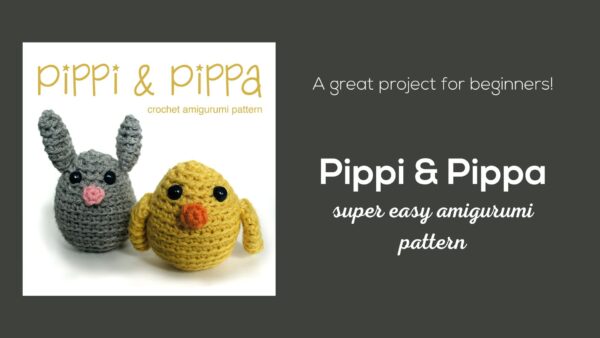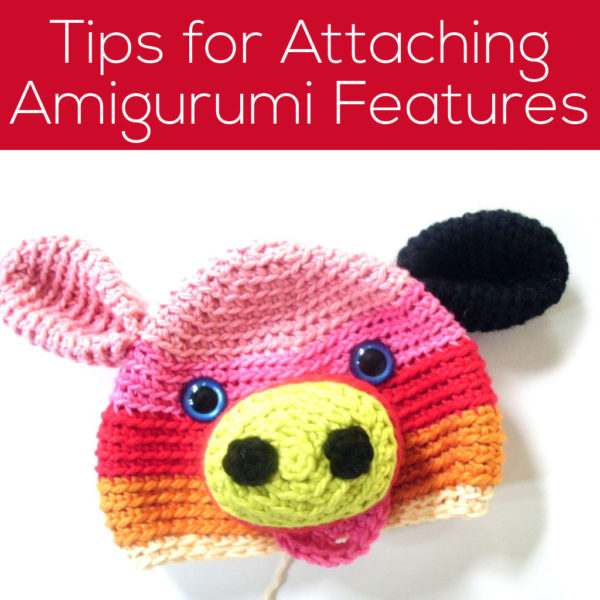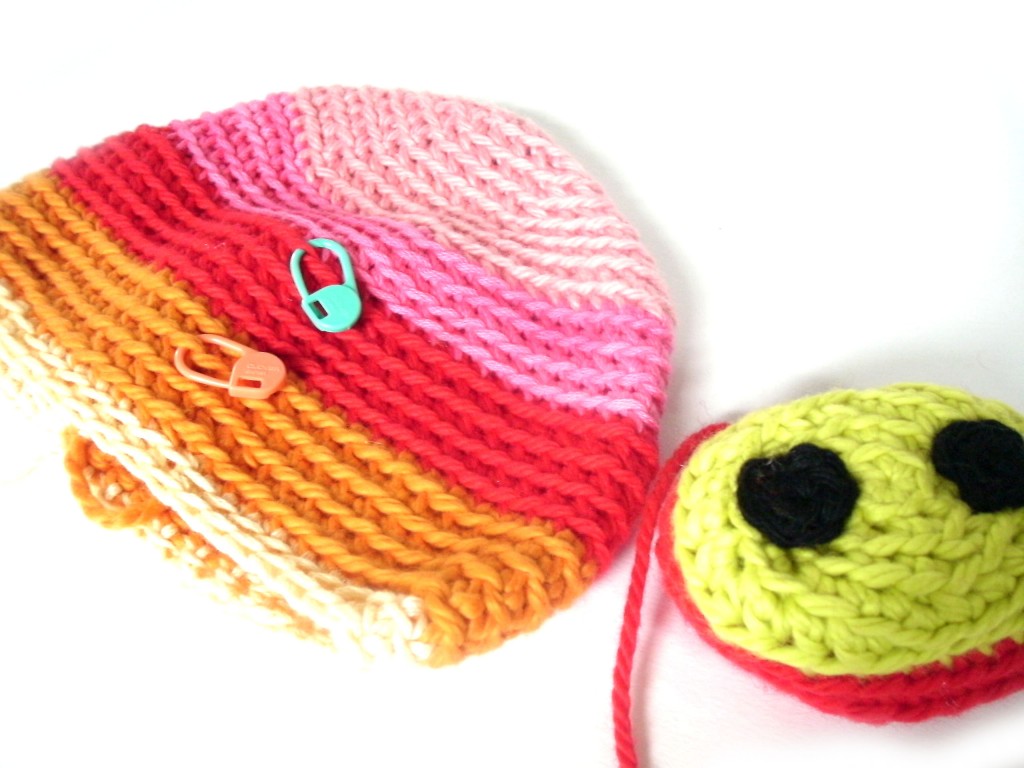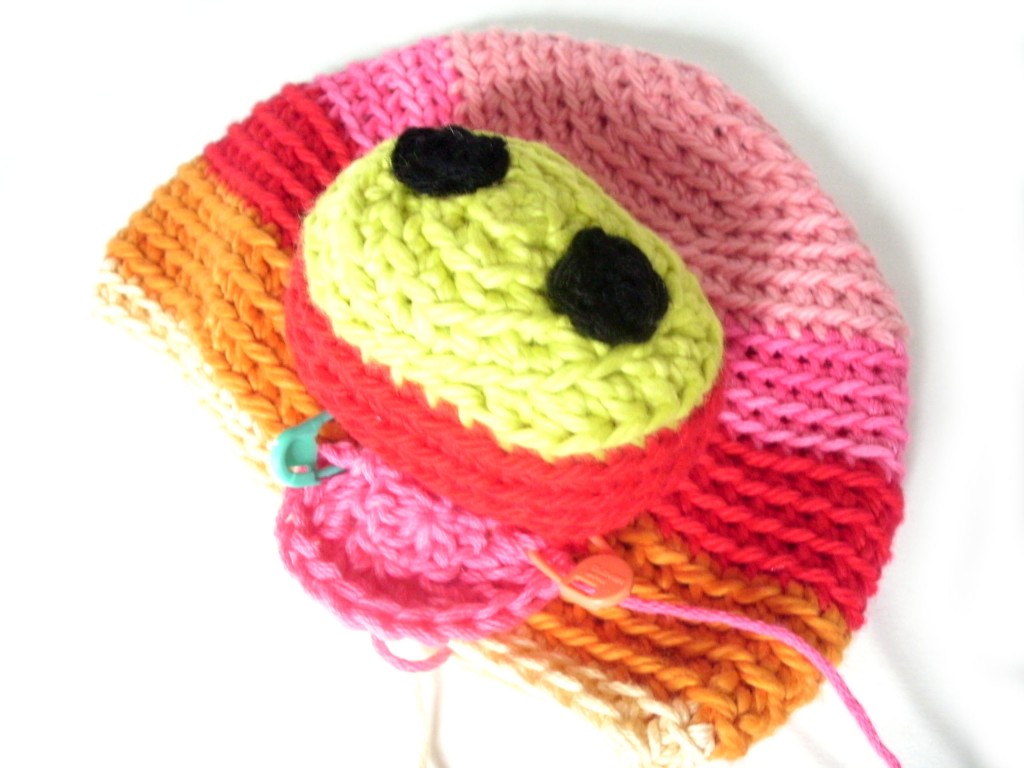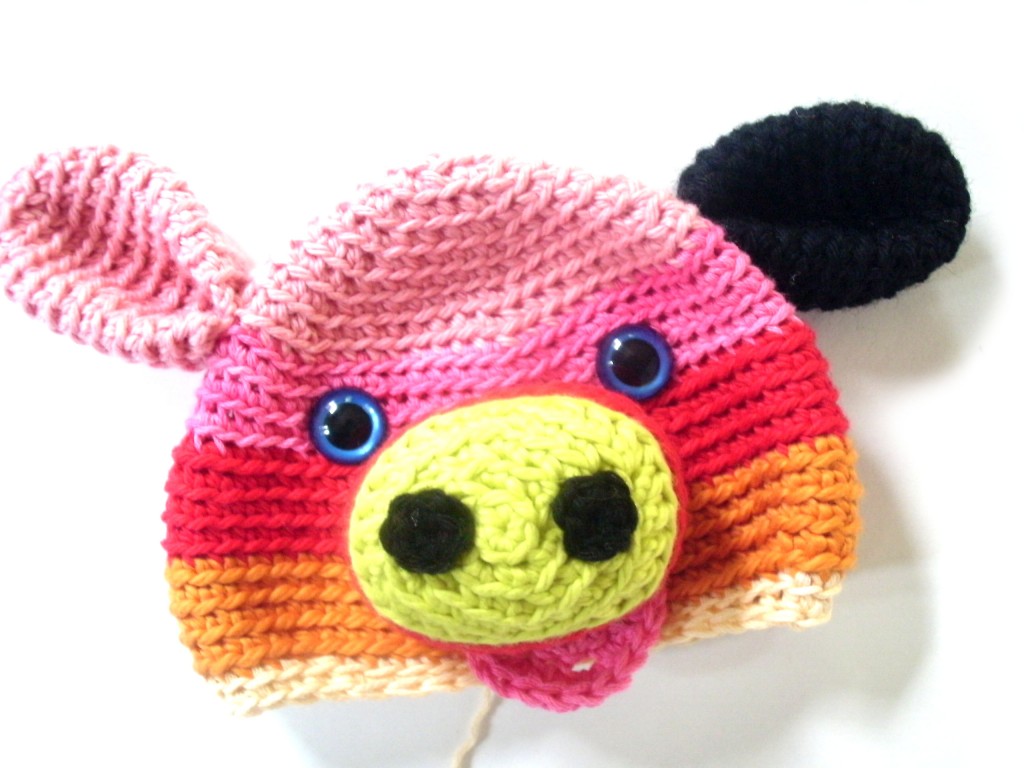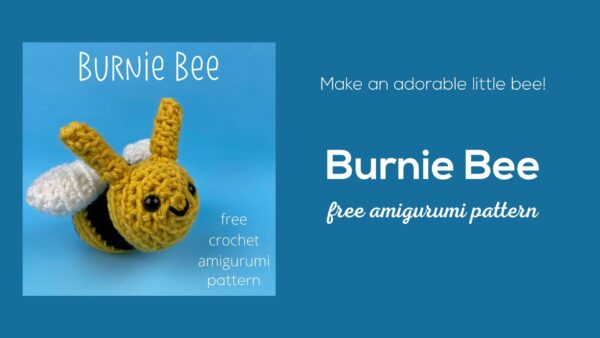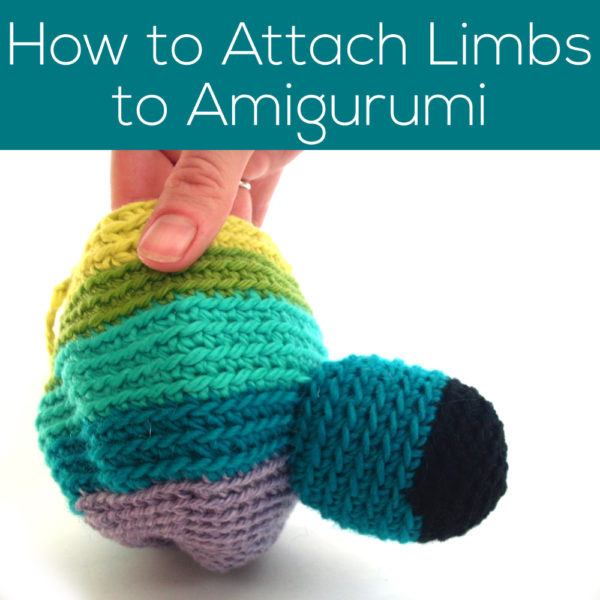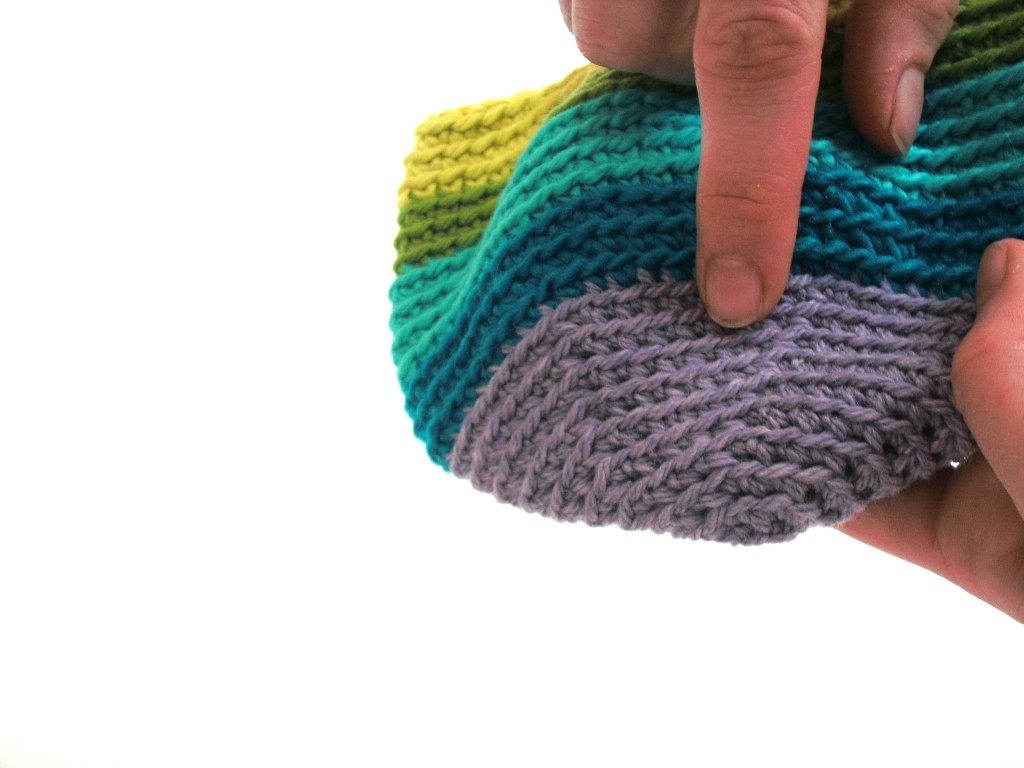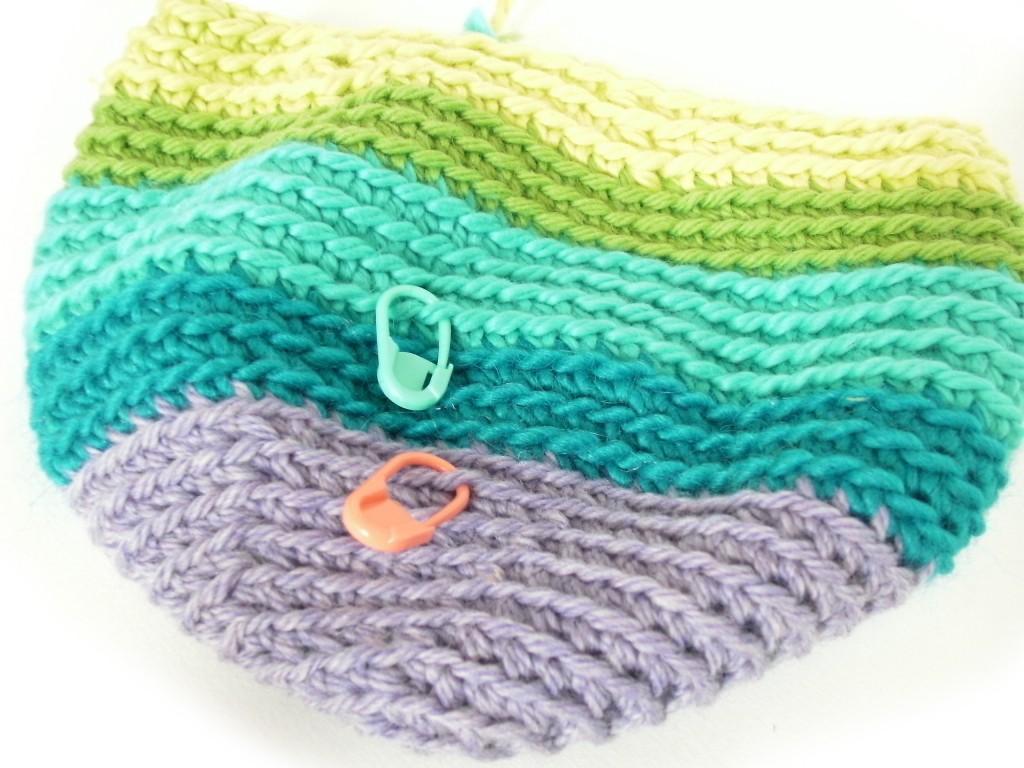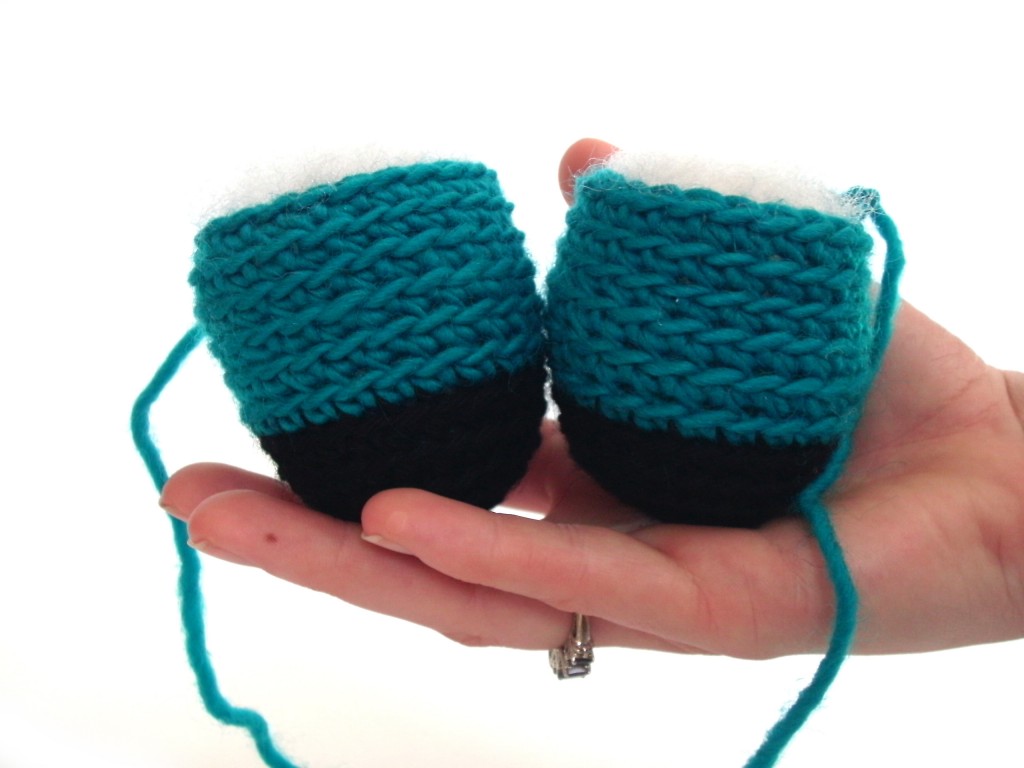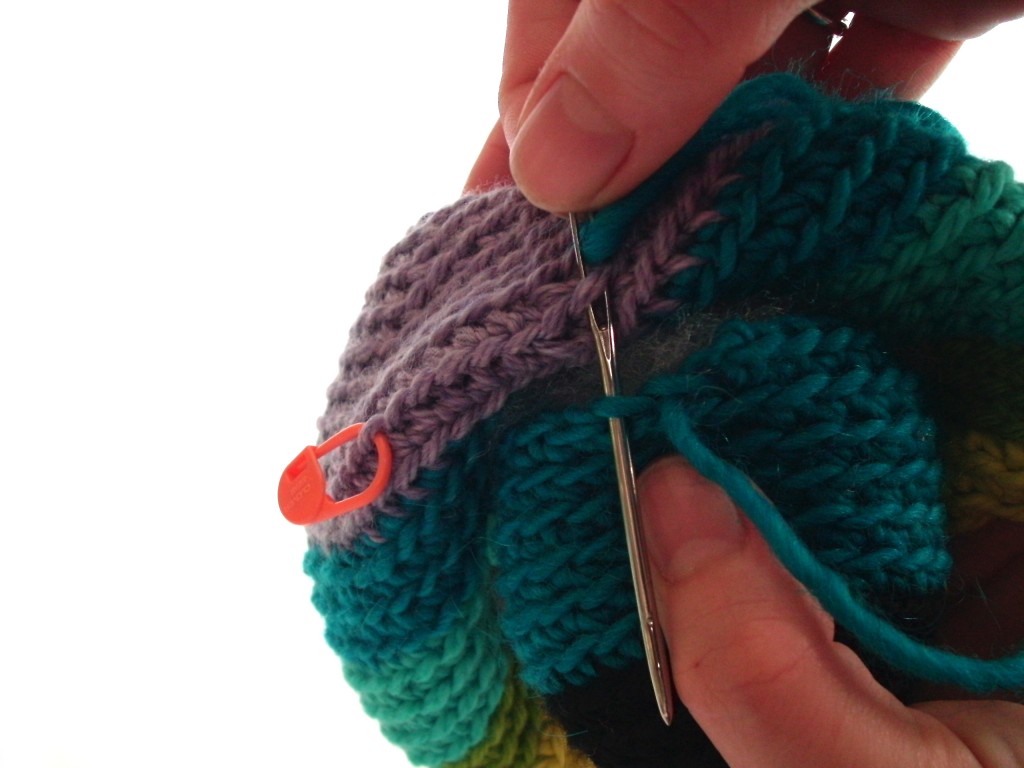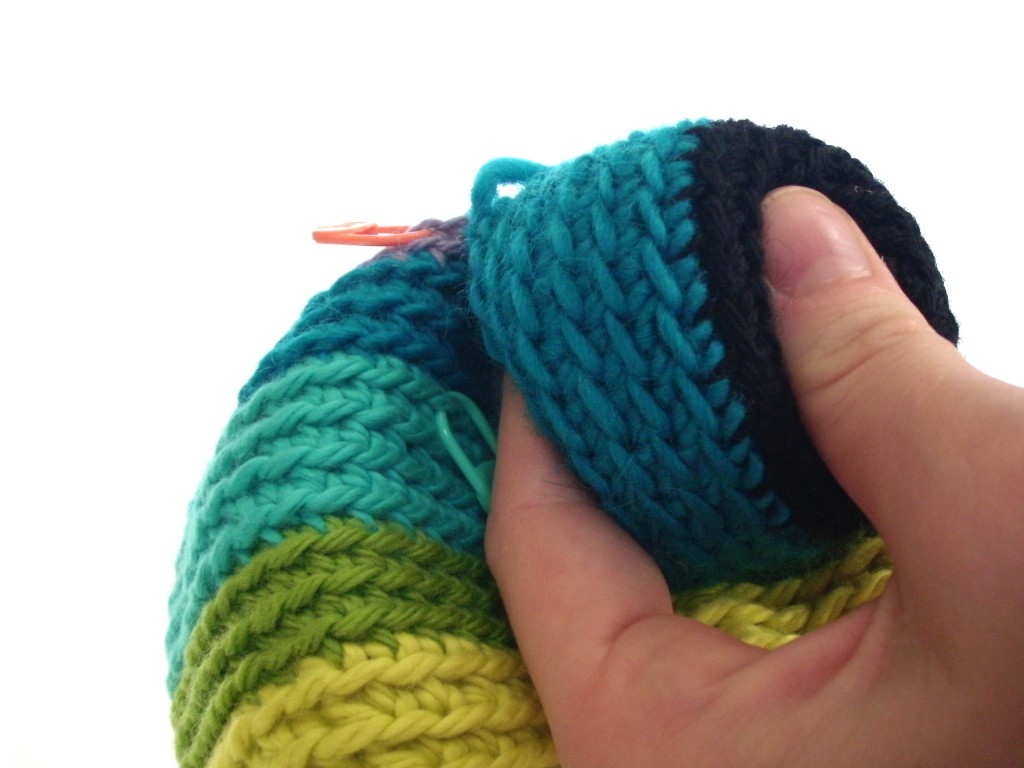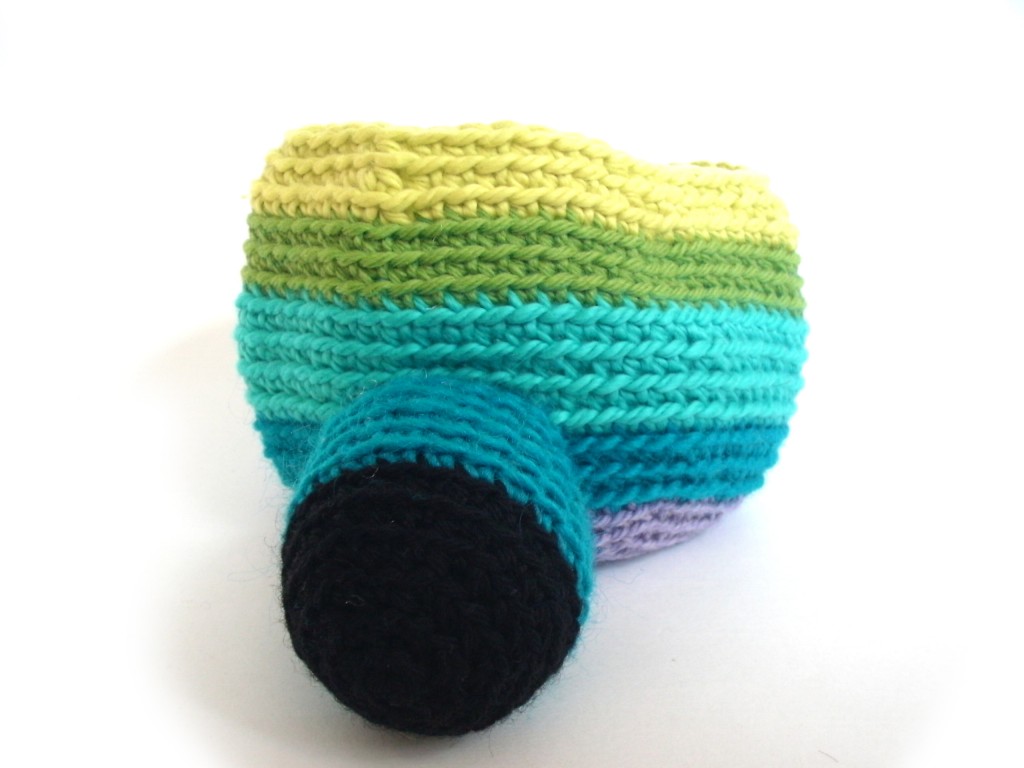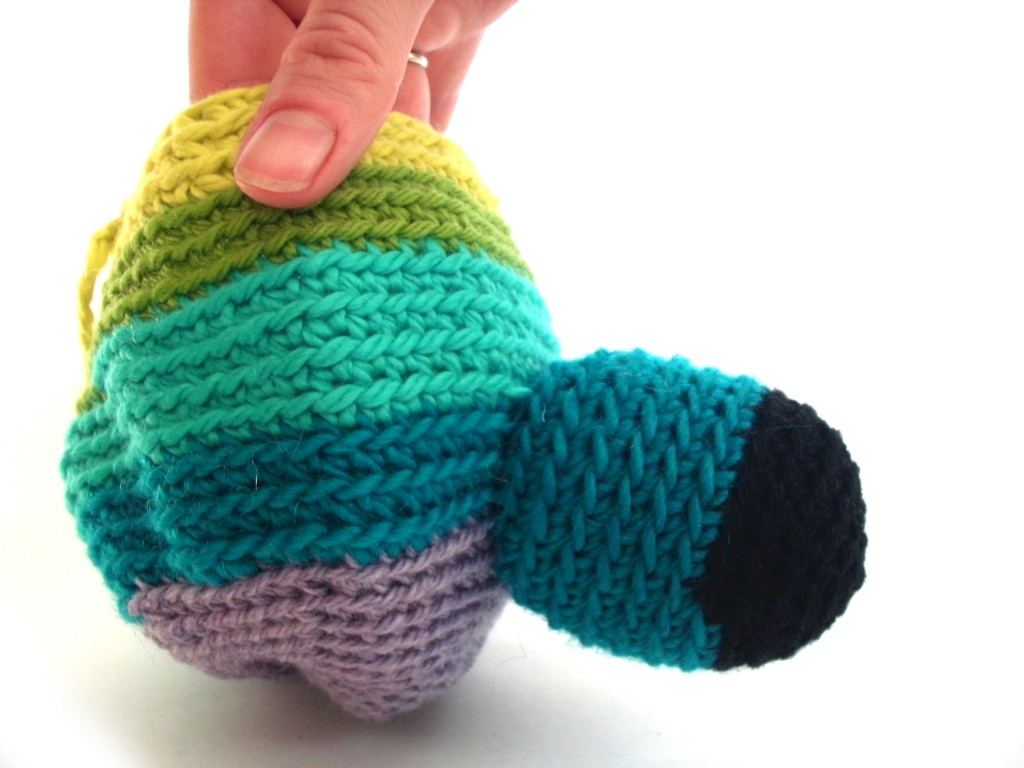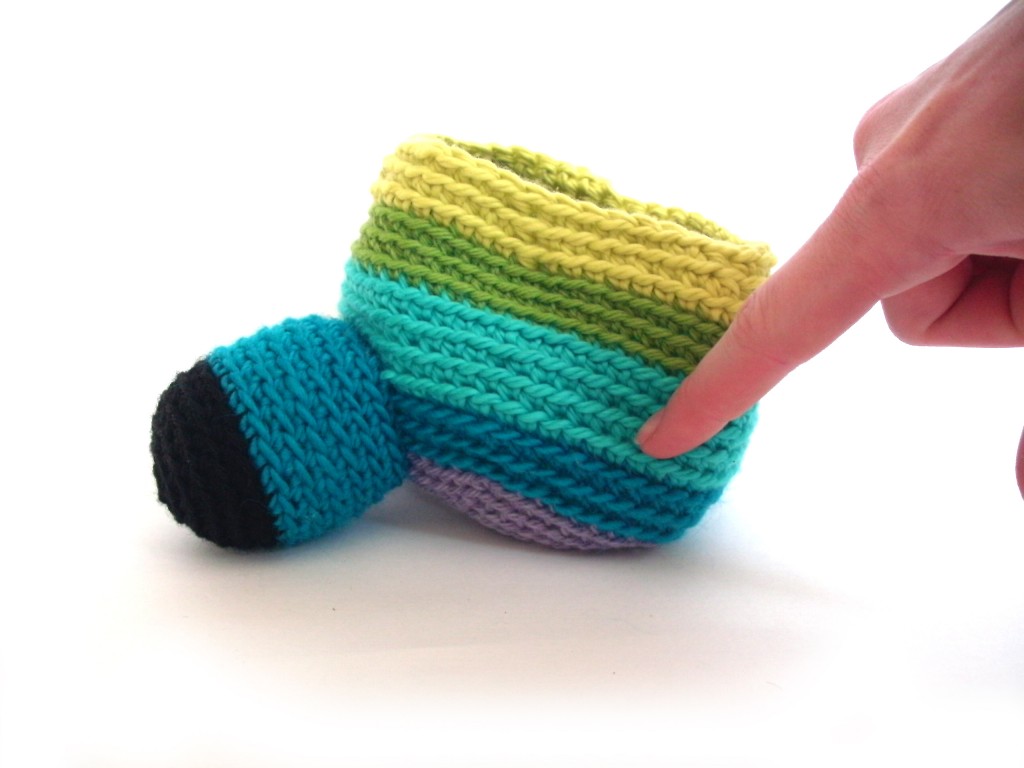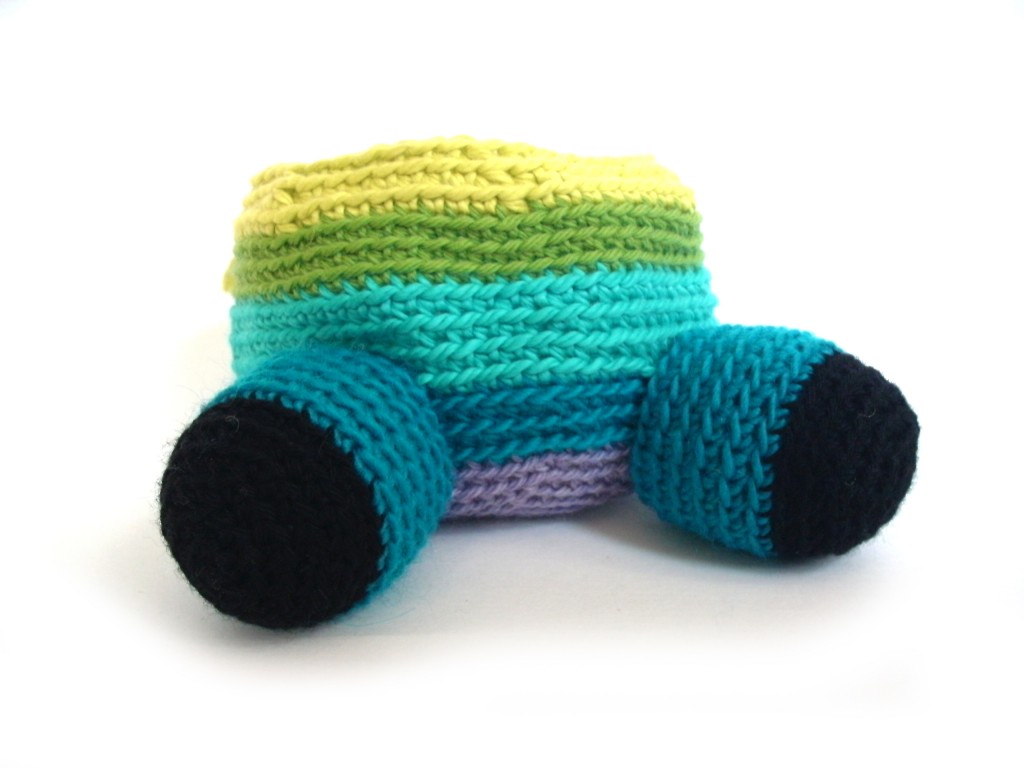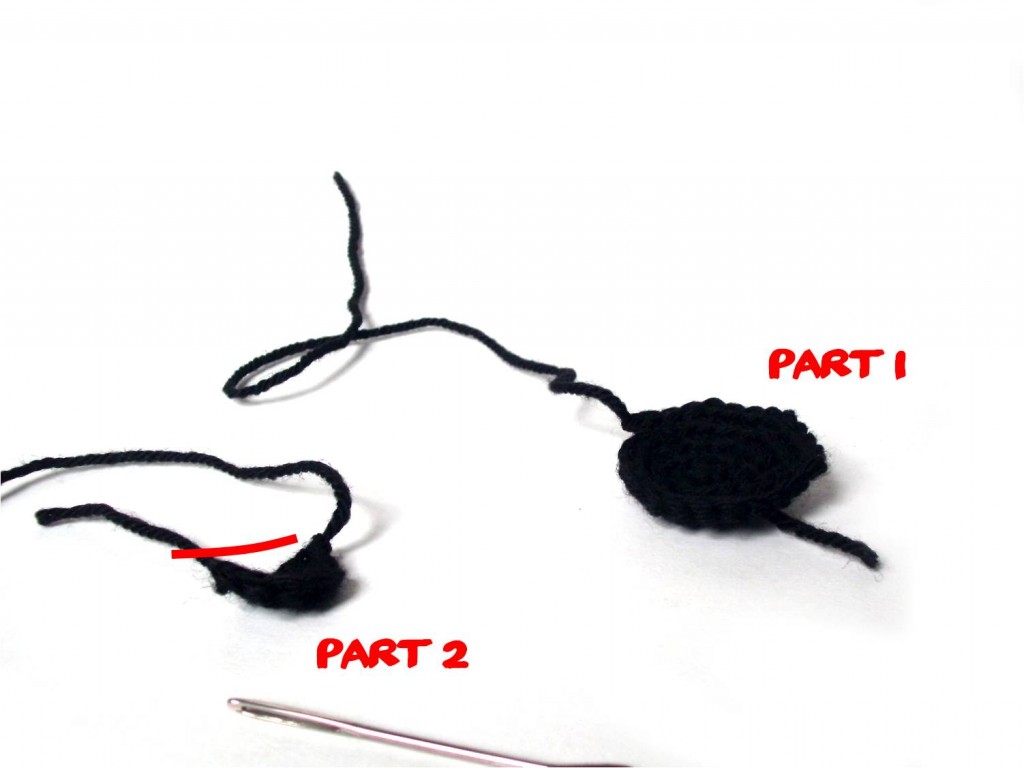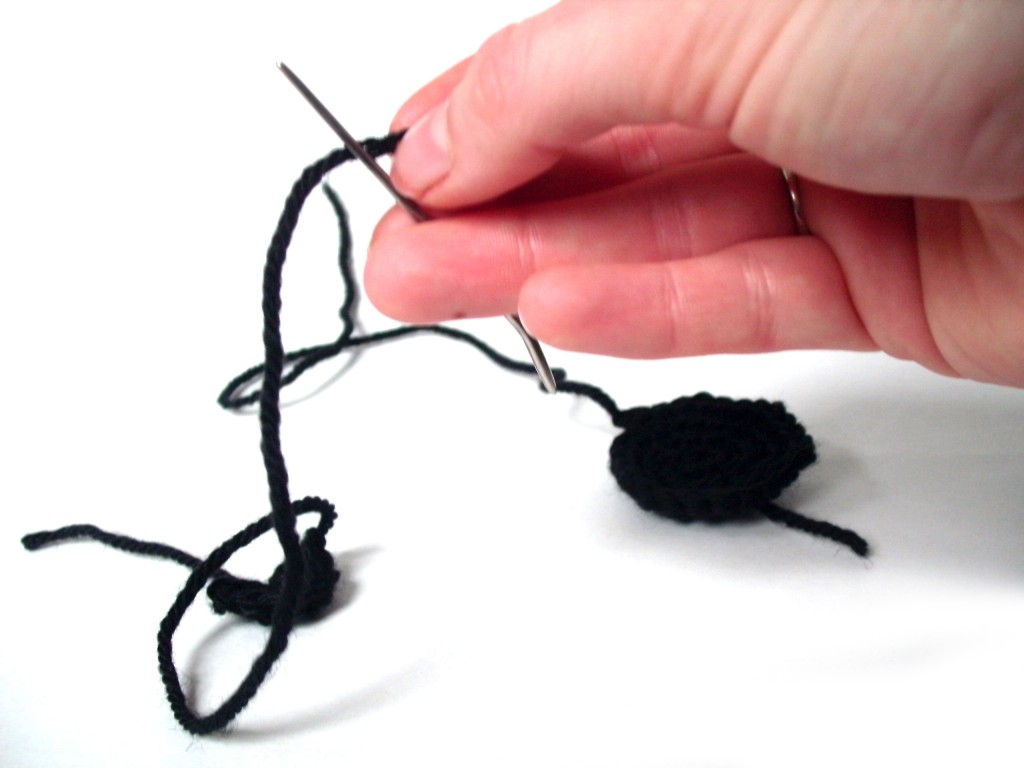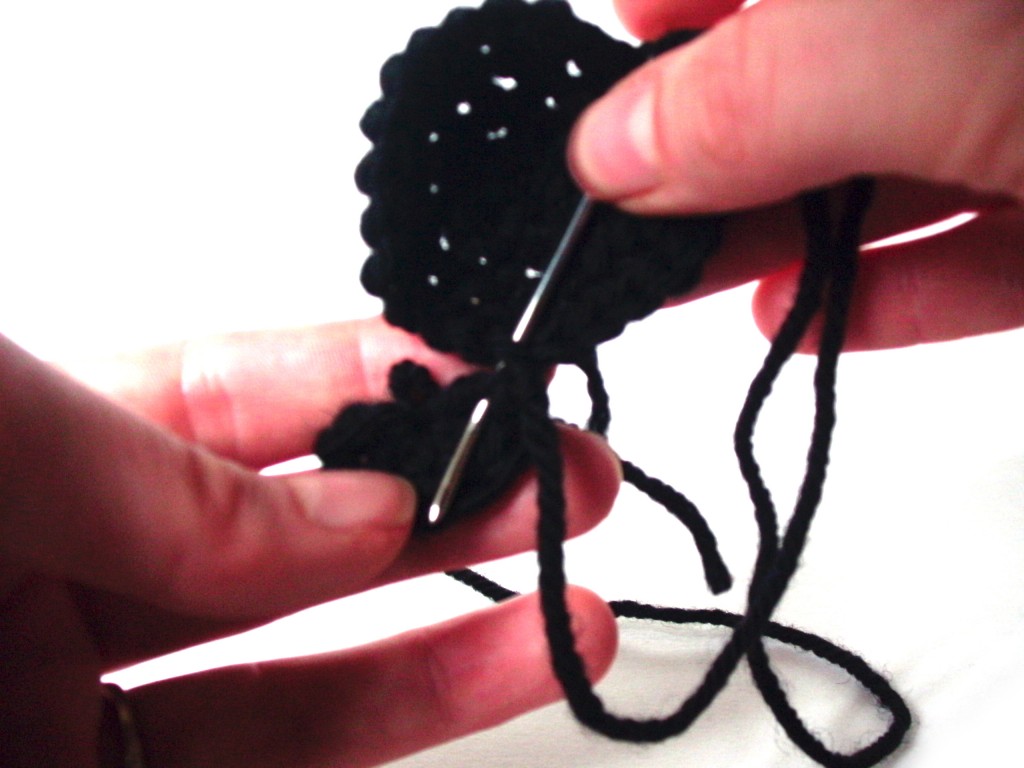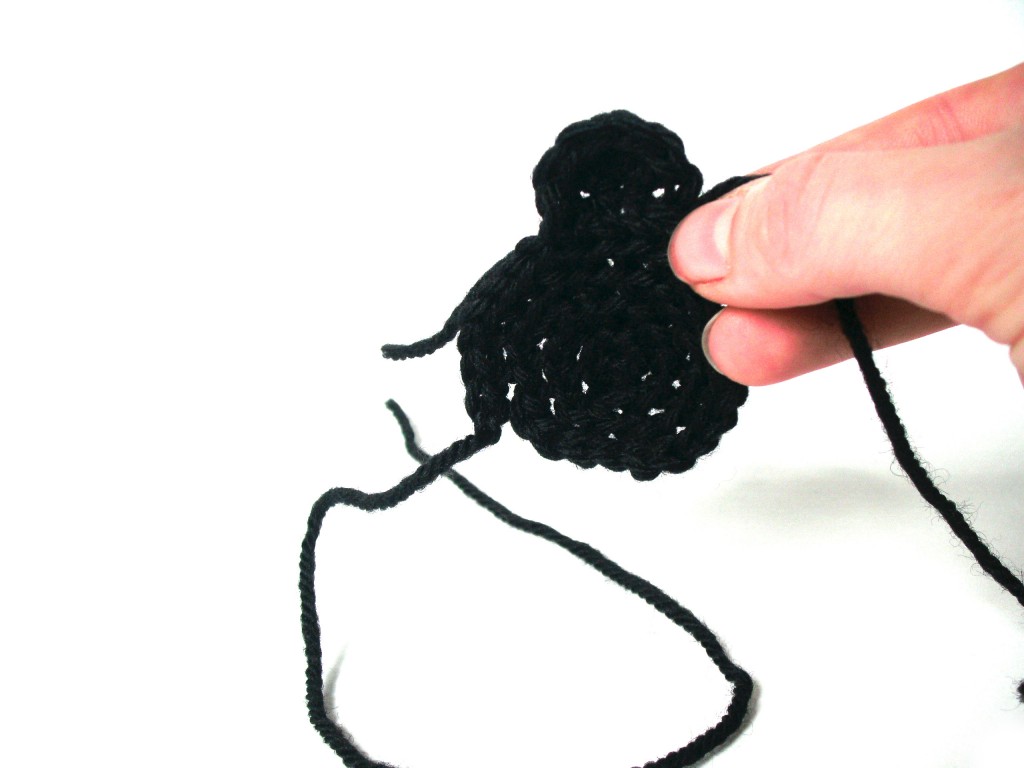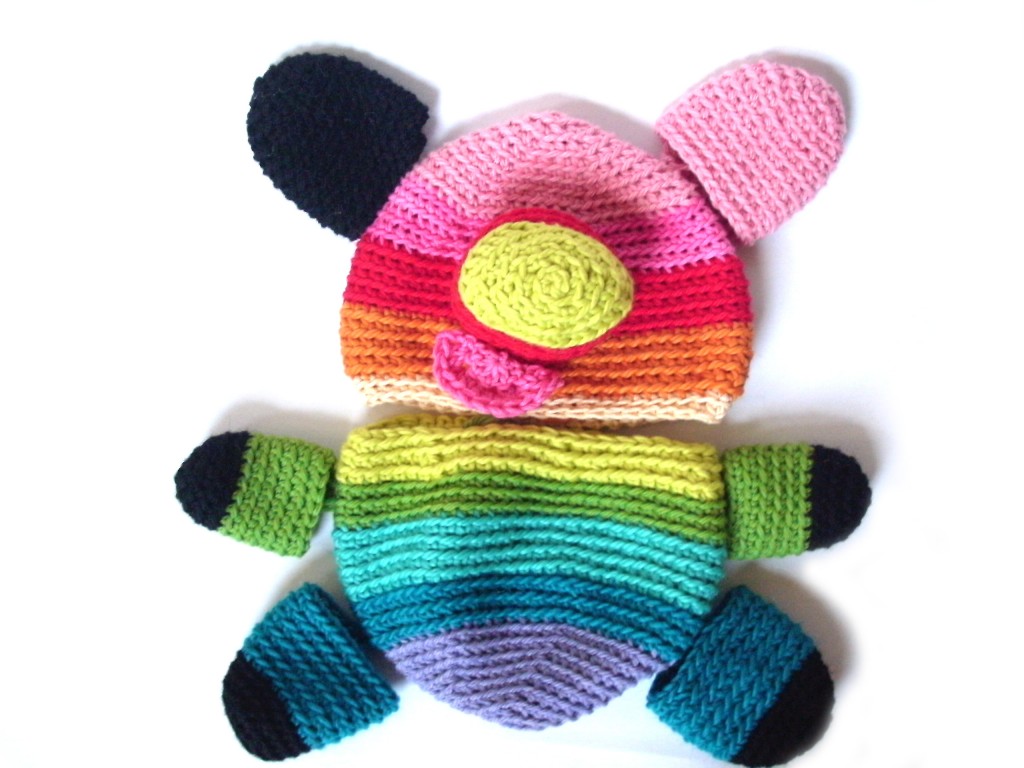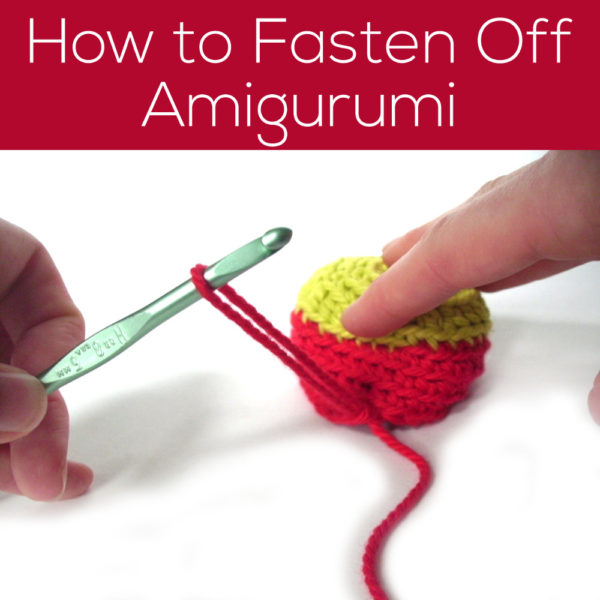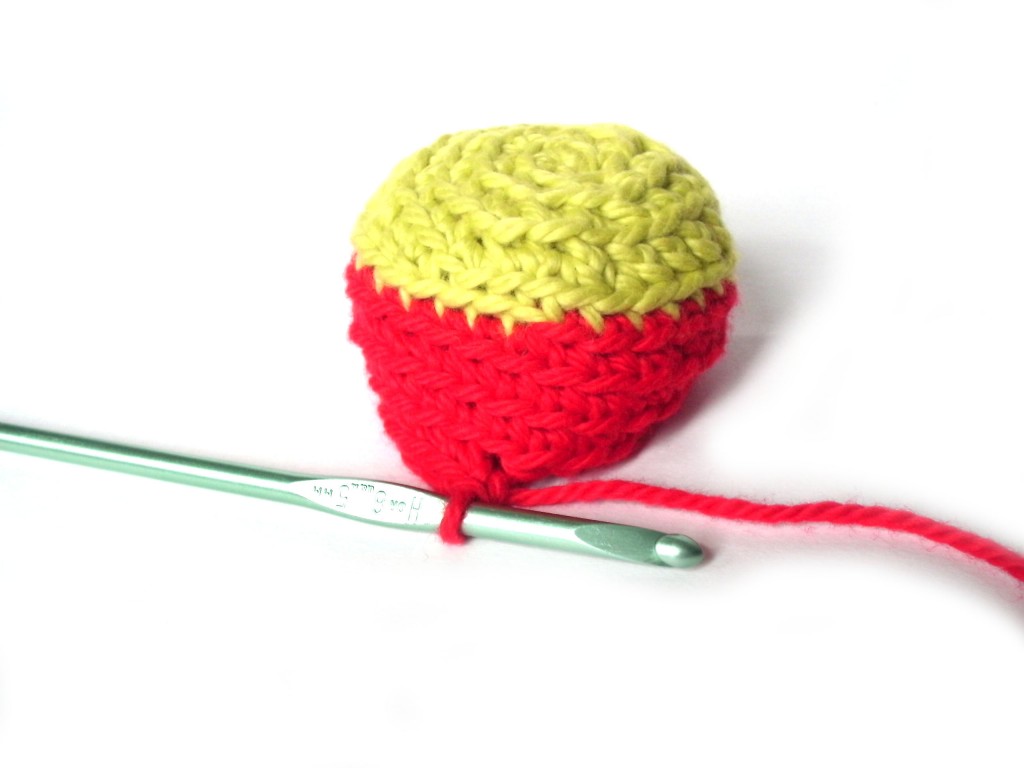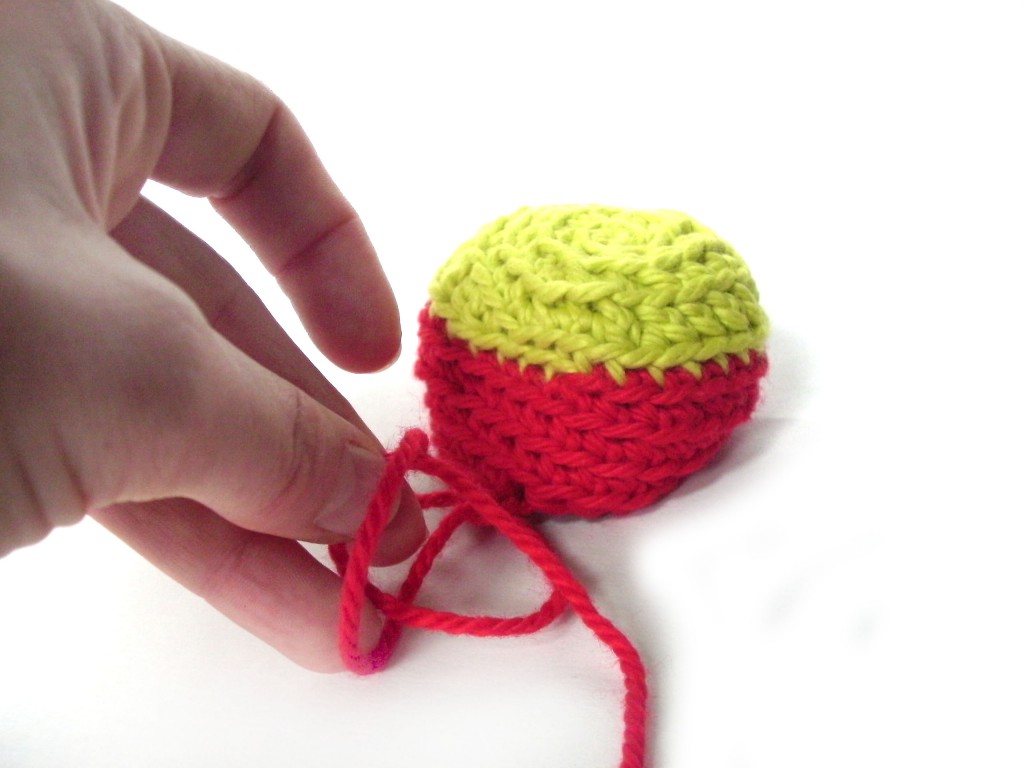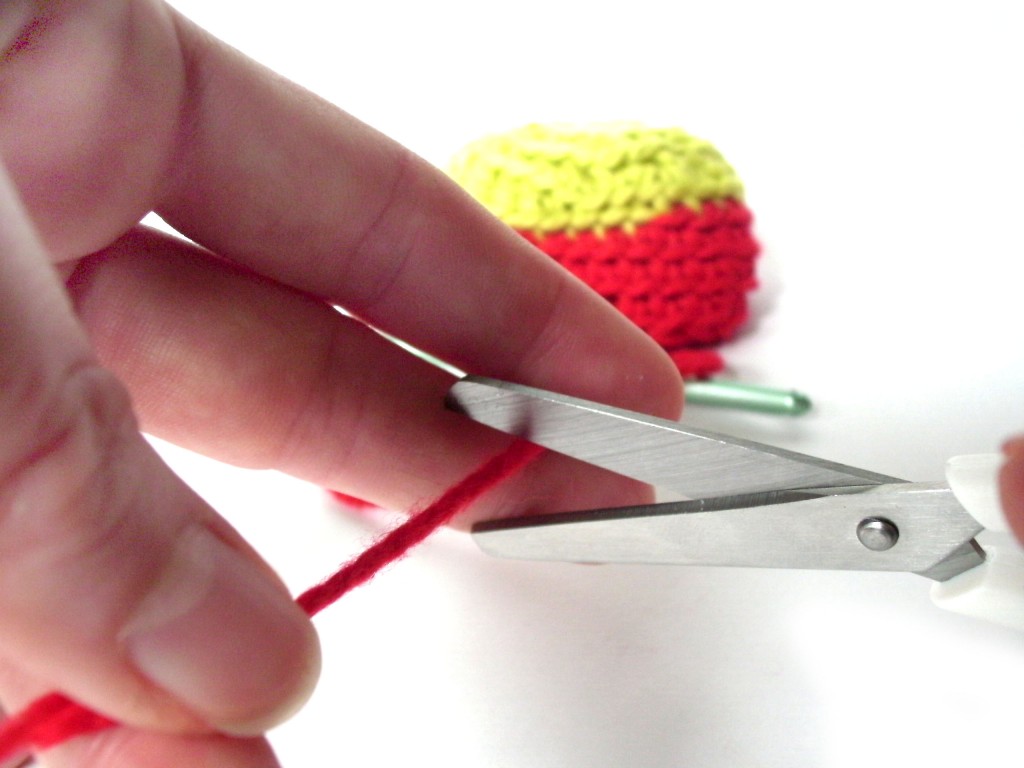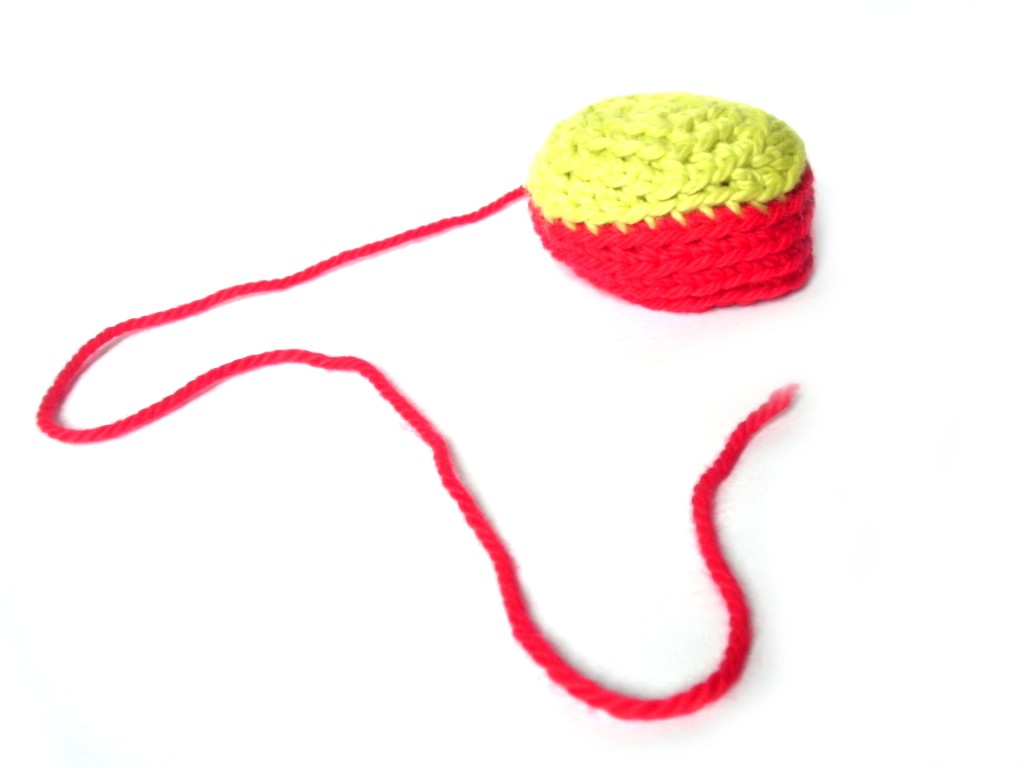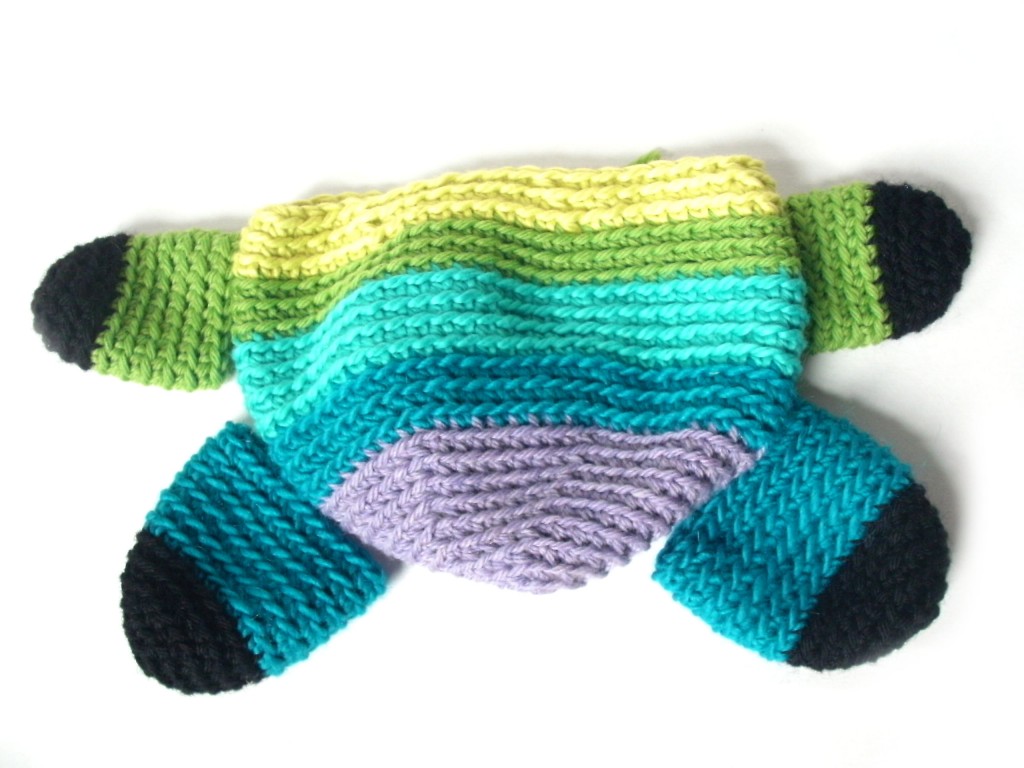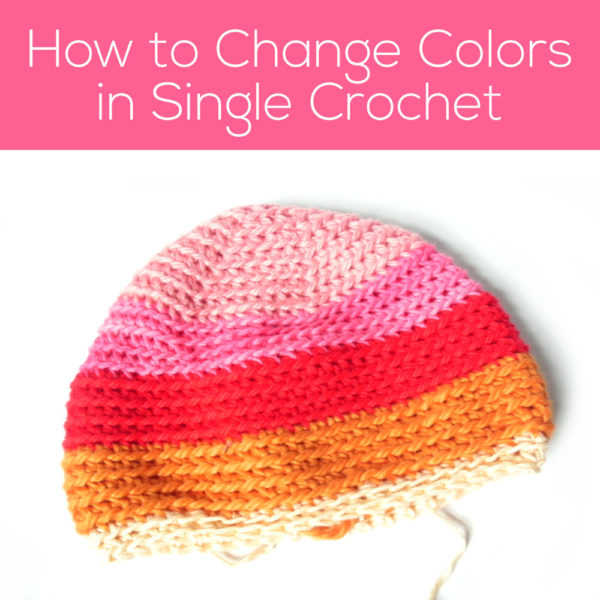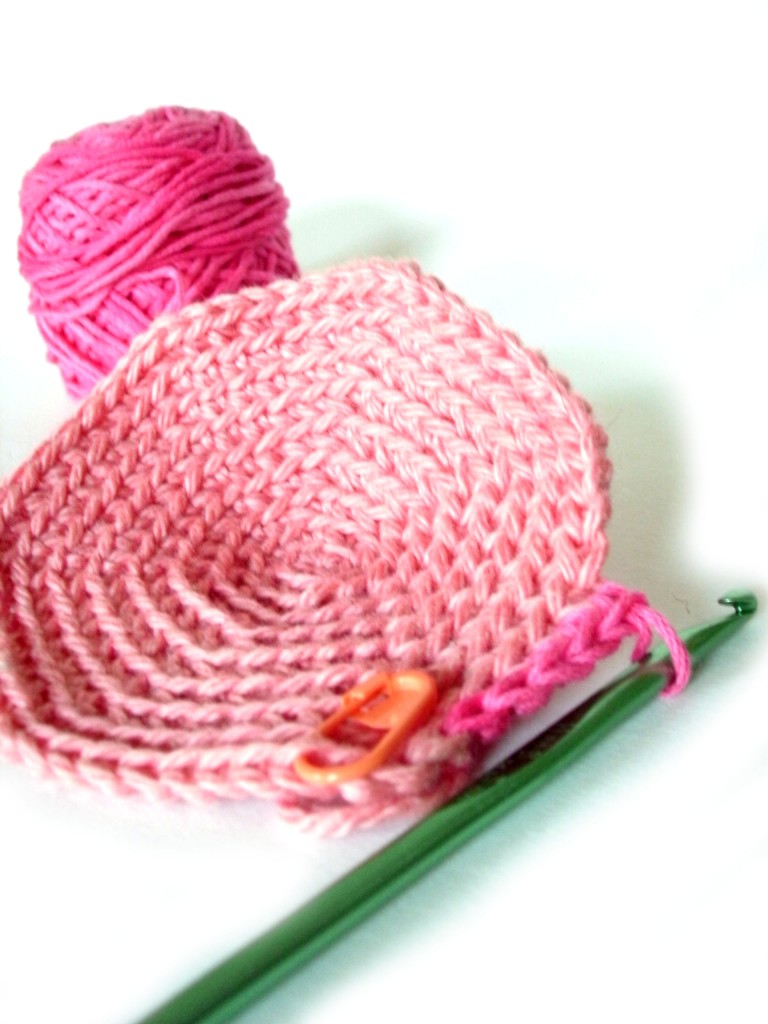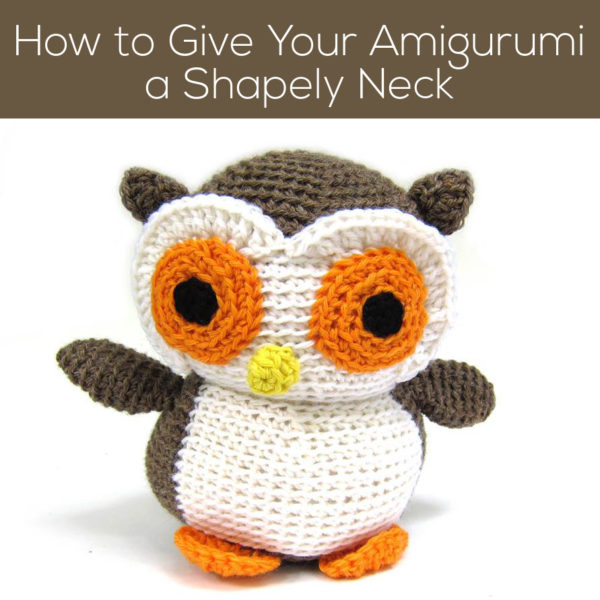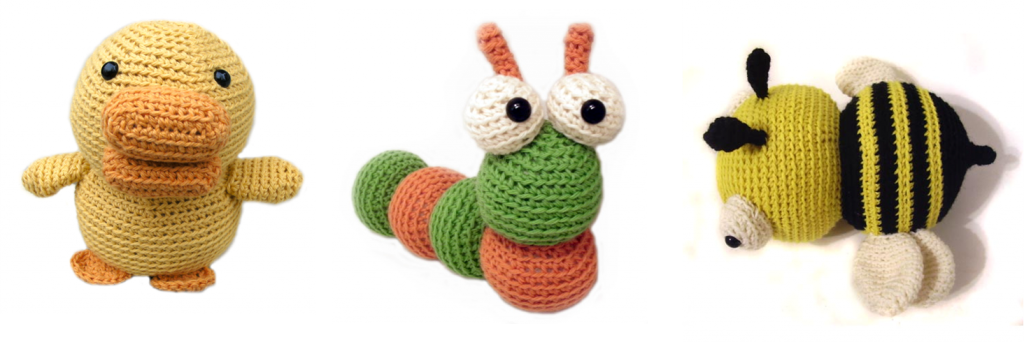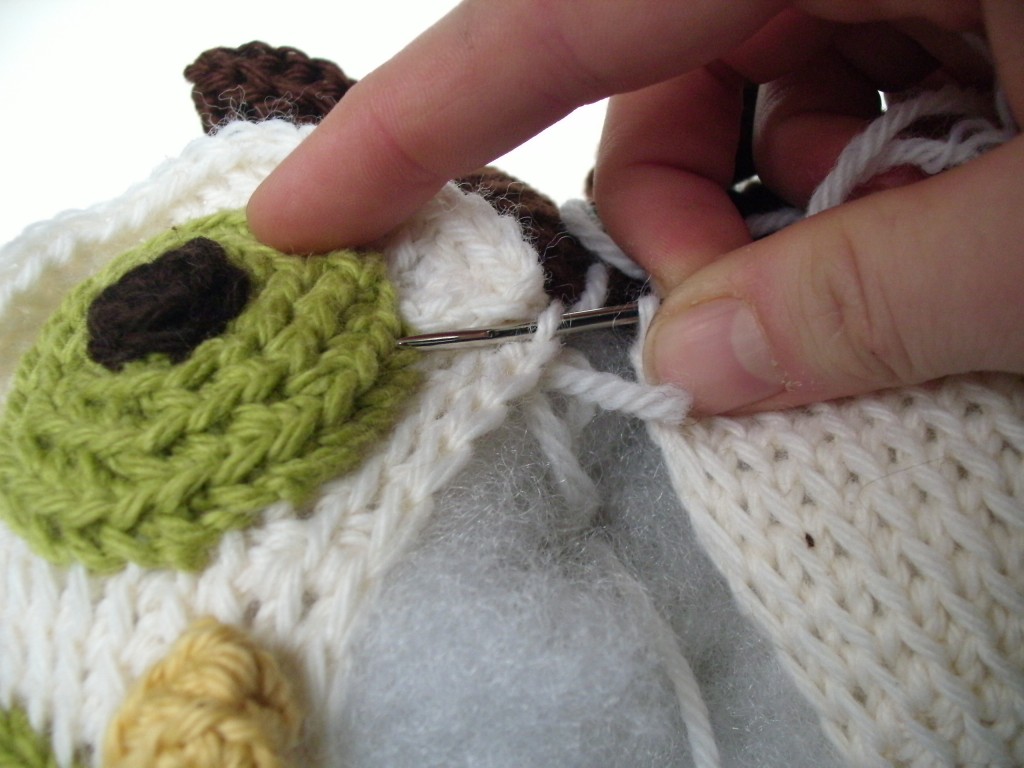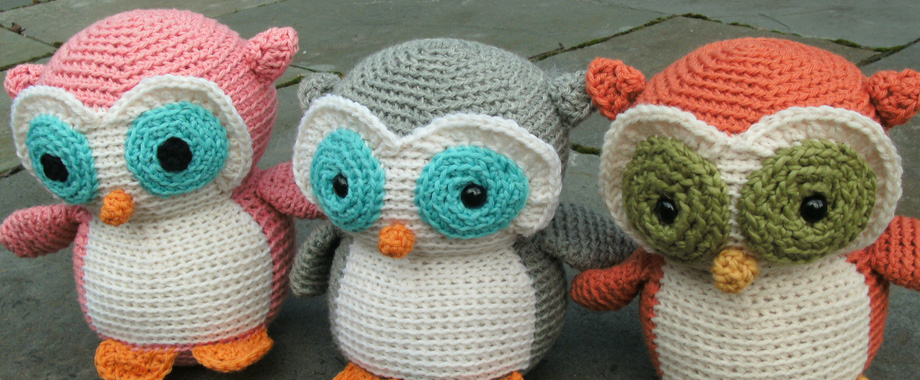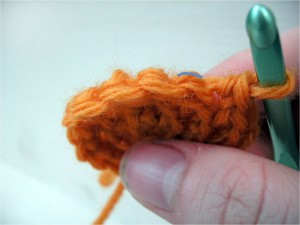Adding a small piece of felt decoration can be a quick and easy way to add character to your amigurumi faces! In today’s blog post, I’ll show you how to do it!
The Glue
Basically, any glue that works on fabrics will work for yarn, as well. I use Aleene’s Original Tacky Glue.
The glue will hold up pretty well, but if you’re making the toy for a small baby, I would recommend sewing the felt on with a sewing needle and thread. Better safe than sorry!
The Process
The thing I love most about felt is how versatile it is! Simply cut the shape you desire, and glue it onto your piece. I sometimes add my felt piece at the very end… so I can see what personality the amigurumi wants!
To glue a piece on, just add a dab of glue to the back of the felt:
And press into place. Voila! Allow the glue to dry completely, and you’re ready to go!
Some tips
Here are a few helpful tips to keep in mind:
- The shape of your felt piece adds expression, so feel free to experiment! For example, a rounded tooth gives a totally different expression than a pointed one!
- Amigurumi are made from round balls… and in general, flat pieces don’t glue well to balls! To make sure your felt stays, attach to a relatively flat portion and keep your felt pieces small.
- If you don’t like the look of your felt, just pull it off before the glue dries! You can gently wash the remaining glue off with a wet washcloth.
I hope you enjoy experimenting with adding some felt to your amigurumi!
And remember, you are the one crocheting! Even if a pattern doesn’t call for a felt facial feature… feel free to modify it and add one! It’s your piece!

Here are handy links to all the posts about faces and details. . .
- How to Embroider with Yarn
- How to Embroider a Smile on Amigurumi
- How to Attach Felt Pieces to Your Amigurumi
- How to Add Hair to Amigurumi
- How to Make a Pompom Tail
- How to Crochet with Beads
Return to the main table of contents for Let’s Learn to Crochet Amigurumi.
Move on to the lessons about eyes.
Happy stitching!

